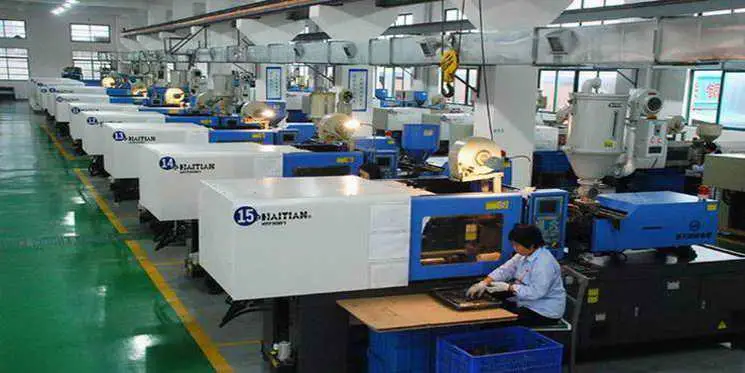What are the common fillers?
There are many types of fillers used by plastic manufacturers, and it is not necessary to know all of them in detail. Below is a brief introduction to the performance of the most commonly used and conventional fillers to facilitate their accurate application.
Calcium Carbonate (CaCO₃)
This is the most widely used filler in plastic production. Besides providing bulk, it can also improve processing performance and product quality. It is relatively soft and causes less wear on equipment. It is divided into light and heavy grades, with the light grade performing better than the heavy grade. This filler is commonly used in PVC.Talcum Powder
A white, flaky crystalline substance containing fibrous materials, chemically stable, and is the softest among inorganic fillers, with a slippery feel. When used in thermoplastics, it can increase the rigidity of products, dimensional stability, prevent creep, and improve lubrication. However, excessive amounts can negatively affect welding. It is mostly used in acid-resistant, alkali-resistant, heat-resistant, and electrically insulating products, with a wide range of applications.White Carbon Black
Also called hydrated silica. Mainly used to improve processing performance and certain physical properties. Widely used in thermoplastics and can also serve as a thickener and thixotropic agent in thermosetting plastics.Hollow Microspheres
This is a new type of filler made from inorganic or organic materials in the form of hollow microbeads, primarily consisting of natural mineral materials such as glass, silica, and alumina. Among these, glass hollow microspheres are the most widely used. Because they are not shear-resistant, they are often used in thermosetting plastics. Organic microspheres are made mainly from natural latex, cellulose derivatives, and synthetic resins. Hollow microspheres made from organic materials have lower density and better impact resistance, but their chemical stability is weaker.Solid Glass Microspheres
Another new type of filler with many outstanding advantages: due to the much higher melting temperature of glass compared to resin, they have good thermal stability; glass resists corrosion well, giving the microspheres high chemical stability; their smooth surface minimizes wear on equipment. Glass microspheres have a wide range of applications and can be used in both thermoplastics and thermosetting plastics.Other Fillers
Other inorganic fillers include kaolin, barium sulfate (gypsum), asbestos, mica, glass fibers, etc. Organic fillers include wood flour, nut shell powder, organic fibers, and so on.
Understanding the related properties of various fillers and applying them correctly in plastic molding helps achieve cost-effective and high-quality products. This is a deliberate pursuit of engineers and technicians engaged in the plastics industry, as full understanding leads to better utilization of fillers.
- What is a plasticizer and what is its mechanism of action?
Plasticizers are substances added to resins to increase the plasticity of the resin system, improve processing performance, and impart certain flexibility to the products.
(1) Role of Plasticizers
The plasticizing process of plasticizers in plastics can be viewed as a "dissolution" process between the resin and the low-molecular-weight compounds of the plasticizer. However, plasticizers differ from general solvents because solvents evaporate during processing, whereas plasticizers are intended to remain in the polymer for a long time without chemically reacting with the resin, forming a solid with the resin. After adding plasticizers, the plastic becomes softer, more flexible, more cold-resistant, and exhibits increased elongation. Simultaneously, hardness, modulus, glass transition temperature, melting point, softening temperature, or flow temperature decrease. The viscosity of the plastic lowers and flowability improves, thereby enhancing processing performance.
(2) Mechanism of Plasticizer Action
The mechanism of plasticizer action is generally considered to be as follows:
When the plasticizer and resin melt together, the small molecules of the plasticizer insert themselves between the polymer chains, weakening the intermolecular attraction between polymer chains and increasing the distance between them. This increases the mobility of polymer chains and reduces their entanglement, allowing the resin to undergo glass transition at lower temperatures, resulting in increased plasticity. This shows that intermolecular forces and entanglements between polymer chains are key factors opposing plasticization.
The molecular structure of the polymer also affects the intermolecular forces between polymer chains, especially the nature of the groups on the polymer chains. Polymer chains with strongly polar groups have stronger intermolecular forces, while those with nonpolar groups have weaker intermolecular forces. To make polymers with strongly polar groups easier to mold, plasticizers can be added. The polar groups of plasticizers interact with the polar groups of polymers, weakening the intermolecular forces and achieving plasticization.
In summary, the key to plasticizer action is the weakening of intermolecular forces between polymers. Additionally, because plasticizers are generally small molecules that easily move between polymer chains, they also act as lubricants facilitating the movement of the long polymer chains.

